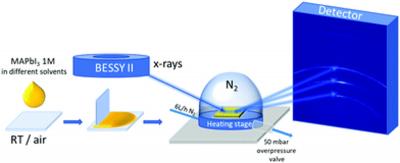Researchers devise synthesis method for perovskite nanocrystals with 12 and 26 facets
India-based researchers have recently designed a novel synthesis procedure that can produce highly uniform luminescent perovskite nanocrystals with uncommon shapes and surface morphologies.
Their work broadens the range of strategies that can be used for tuning the optical and photonic properties of these materials, which are widely studied for use in solar cells, light-emitting diodes, and electronic displays.




